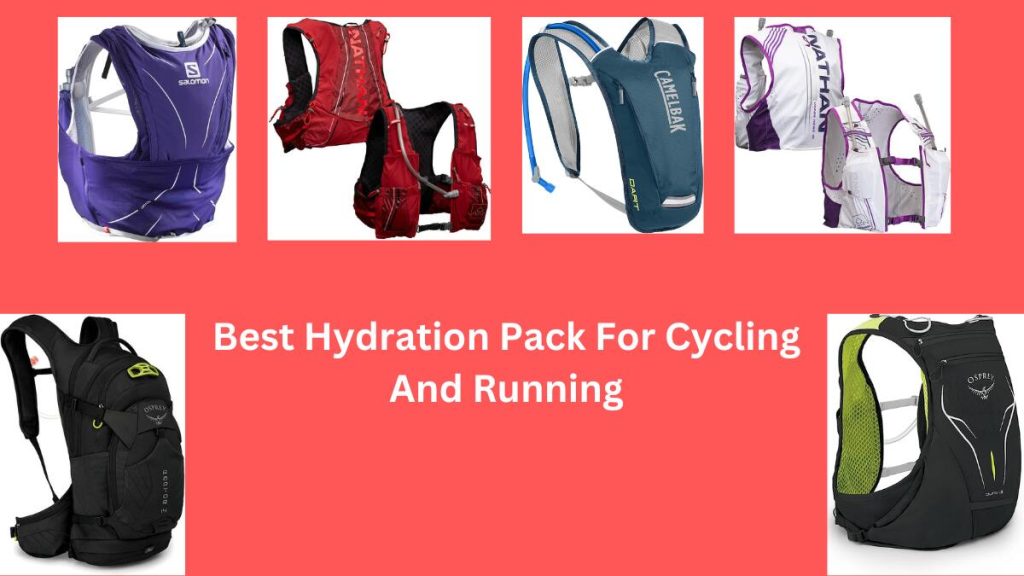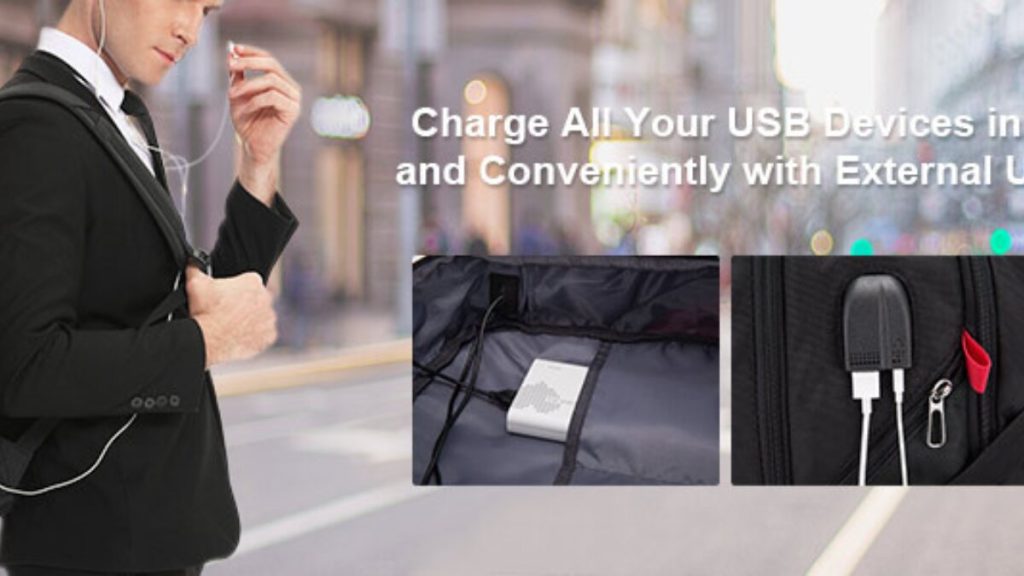Hydration packs are an essential piece of gear for cyclists and runners who need to stay hydrated during long rides or runs. These packs come in various shapes and sizes and are designed to keep water close at hand, allowing athletes to stay hydrated without having to stop or slow down. But the question is “What is the best hydration pack for cycling and running?”.
This article will cover everything you need to know about choosing the best hydration pack for cycling and running. We’ll look at the different types of packs available, key features to consider, materials and water bladders, filters and purifiers, and popular brands and models. We’ll also provide tips on maintenance and care and give our top picks for the best hydration packs for cycling, running, and triathlons. By the end of this article, you’ll have all the information you need to choose the right hydration pack for your needs.
What Is The Best Hydration Pack For Cycling And Running?
When it comes to hydration packs for cycling and running, there are three main types to choose from: backpacks, waist packs, and vest packs. Each type has its own advantages and disadvantages, and the choice largely depends on personal preference and the type of activity you’ll be doing.
Backpacks
Backpacks are the most popular type of hydration pack and are often used for longer rides or runs. They typically have a larger capacity and can carry more water and gear than other types of packs. Backpacks are also more stable than waist packs and vest packs since they distribute the weight of the pack evenly across the back. However, they can be less breathable and hotter than other types of packs, especially in warmer weather.
Waist Packs
Waist packs are smaller and more lightweight than backpacks, making them a good choice for shorter runs or rides. They typically have a smaller capacity and can carry less gear, but are more stable and less restrictive than backpacks. Waist packs can also be more breathable and cooler than backpacks, which makes them a popular choice for warmer weather. However, they can bounce around more than backpacks and are not as comfortable for carrying larger amounts of water.
Vest Packs
Vest packs are a newer type of hydration pack that are designed to be worn like a vest. They offer a more stable and comfortable fit than waist packs and are more breathable than backpacks. They also have a smaller profile and are less restrictive than backpacks, making them a good choice for shorter runs or rides. However, they typically have a smaller capacity than backpacks and can be less comfortable for carrying larger amounts of water.
Comparison of Types
When deciding on the best type of hydration pack for your needs, it’s important to consider the duration of your activity, the amount of gear you need to carry, and your personal preference. 1- Backpacks are the most versatile and can carry the most gear and water, but they can also be less breathable and hotter than other types of packs. 2- Waist packs are a good choice for shorter activities and are more stable than vest packs, but they can be less comfortable for carrying larger amounts of water. 3- Vest packs are the most breathable and comfortable, but they typically have a smaller capacity than backpacks and waist packs.
Key Features to Consider
When choosing a hydration pack for cycling or running, there are several key features to consider to ensure that you get the most out of your pack. Here are some important factors to keep in mind:
Capacity
The capacity of a hydration pack refers to how much water it can hold. This is usually measured in liters and can range from 1-3 liters or more, depending on the type of pack. When choosing a pack, it’s important to consider how much water you’ll need for your activity and choose a pack with an appropriate capacity.
Weight
The weight of the hydration pack is also an important consideration, especially for runners who want to minimize extra weight. A lighter pack will be more comfortable to wear and won’t weigh you down, but it may have a smaller capacity than a heavier pack.
Comfort and Fit
The comfort and fit of a hydration pack are essential to ensure that you can wear the pack for long periods without discomfort. Look for a pack with adjustable straps and a snug fit that doesn’t bounce around or rub against your skin. Some packs also come with padded shoulder straps or a mesh back panel for added comfort.
Durability
The durability of a hydration pack is important, especially if you plan to use it frequently or for rugged activities. Look for a pack made from high-quality materials that can withstand wear and tear, such as nylon or polyester. Some packs also come with reinforced seams or rip-stop fabric to prevent damage.
Access to Water
The ease of accessing water from the pack is another important factor. Look for a pack with a high-quality water bladder and an easy-to-use drinking tube. Some packs also come with a bite valve or a magnetic hose clip for hands-free hydration.
Ease of Cleaning
Hydration packs need to be cleaned regularly to prevent bacteria and mold from growing in the water bladder. Look for a pack with an easy-to-clean water bladder and drinking tube, and consider purchasing a cleaning kit to make the process easier.
Additional Features
Finally, consider any additional features that might be useful for your activity, such as extra pockets for storing gear, reflective material for visibility in low light, or a built-in whistle for emergencies.
By considering these key features, you can choose a hydration pack that meets your needs and ensures that you stay hydrated and comfortable during your activities.
Hydration Pack Materials
When choosing a hydration pack, the type of material it’s made from is an important consideration. Here are some common materials used in hydration packs, along with their pros and cons:
Nylon
Nylon is a lightweight, durable material that is commonly used in hydration packs. It’s also water-resistant, which helps keep the pack and its contents dry. Nylon packs are often more affordable than other materials, but they can be less breathable and may not last as long as packs made from other materials.
Polyester
Polyester is another common material used in hydration packs. It’s a durable and water-resistant material that can withstand wear and tear. Polyester packs are often more breathable than nylon packs and can be more comfortable to wear. However, they may be more expensive than nylon packs.
Mesh
Mesh is a breathable material that is often used in the back panel or shoulder straps of hydration packs. It helps increase airflow and reduce sweat buildup, which can make the pack more comfortable to wear. However, mesh is not as durable as nylon or polyester and may not be suitable for rugged activities.
Hydration Bladder Material
The material used for the hydration bladder is also an important consideration. Common materials include polyurethane, TPU (thermoplastic polyurethane), and PVC (polyvinyl chloride). TPU and polyurethane are more durable and less prone to cracking or leaking than PVC, which can degrade over time. TPU and polyurethane are also BPA-free, which is important for those who are concerned about potential health risks.
When it comes to choosing a hydration pack for cycling or running, it’s important to consider the type of activity you’ll be doing and the conditions you’ll be facing. For example, if you’ll be running in hot and humid conditions, a pack with a mesh back panel may be more comfortable. If you’ll be cycling on rough terrain, a pack made from a durable material like polyester or nylon may be more suitable. Consider the pros and cons of each material and choose the one that best meets your needs.
Water Bladders and Reservoirs
Water bladders or reservoirs are a key component of hydration packs. Here are some common types of water bladders, how they work, and their pros and cons:
Low Profile Reservoirs
Low profile reservoirs are flat and wide, which makes them ideal for packs that sit close to your back, like backpacks. They typically have a capacity of 1.5 to 3 liters and are made from materials like polyurethane or TPU. One advantage of low profile reservoirs is that they distribute the weight of the water evenly across your back, making them comfortable to wear. However, they may not be compatible with all pack types, and they can be more difficult to clean than other reservoirs.
Vertical Reservoirs
Vertical reservoirs are tall and narrow, which makes them ideal for packs that have a narrow profile, like waist packs or vest packs. They typically have a capacity of 1 to 2 liters and are also made from materials like polyurethane or TPU. One advantage of vertical reservoirs is that they are easy to clean, as you can easily reach inside them with a cleaning brush. However, they may be more difficult to fill than low profile reservoirs, and they may not be as comfortable to wear.
Shapeable Reservoirs
Shapeable reservoirs are made from a material that can be molded to fit the shape of your pack. They typically have a capacity of 1.5 to 3 liters and are made from materials like TPU or polyethylene. One advantage of shapeable reservoirs is that they can be customized to fit the shape of your pack, which can make them more comfortable to wear. However, they can be more difficult to clean than other reservoirs, and they may not be as durable.
When choosing a water bladder or reservoir, it’s important to consider the capacity and compatibility with your pack. Some packs may only be compatible with certain types of reservoirs, so be sure to check the manufacturer’s specifications before purchasing. Additionally, consider the pros and cons of each type of reservoir and choose the one that best meets your needs.
Bite Valves
Bite valves are another important component of hydration packs. Here are some common types of bite valves, how they work, and their pros and cons:
Classic Bite Valve
The classic bite valve is the most common type of valve found on hydration packs. It is a simple silicone valve that you bite down on to release water. It is durable and easy to use, making it a popular choice. However, it may not have as strong of a flow rate as other types of valves, and it can sometimes leak.
High Flow Bite Valve
High flow bite valves have a wider opening than classic bite valves, which allows for a higher flow rate of water. They are typically made from silicone or TPU and can be a good choice for athletes who need quick access to water. However, they may be more difficult to clean than other types of valves, and they may not be as durable.
Magnetic Bite Valve
Magnetic bite valves have a magnet in the valve and a corresponding magnet on the pack, which keeps the valve in place when not in use. This can be helpful for preventing leaks and making it easier to access water while on the move. However, they may be more expensive than other types of valves, and the magnets can sometimes come loose or get lost.
When choosing a bite valve, consider factors like flow rate, ease of use, and durability. Some bite valves may be more suitable for certain types of activities, such as high-intensity running or cycling. It’s also important to consider the compatibility of the valve with your pack and reservoir.
Filters and Purifiers
Filters and purifiers are important components of hydration packs, especially for athletes who need to refill their water from natural sources like rivers or streams. Here are some common types of filters and purifiers, how they work, and their pros and cons:
Filters
Filters work by physically removing contaminants from water, such as dirt, bacteria, and debris. There are two main types of filters:
- Mechanical filters: These filters use a physical barrier to block contaminants from passing through. They typically have a pore size of 0.1 to 0.3 microns, which is small enough to remove most bacteria and protozoa. Mechanical filters are generally effective and easy to use, but they may not be able to remove viruses or chemicals from water.
- Activated carbon filters: These filters use activated carbon to adsorb contaminants like chemicals and odors. They are effective at removing some types of chemicals, but they may not be able to remove bacteria or viruses. Activated carbon filters can be a good choice for athletes who are concerned about taste and odor in their water.
Purifiers
Purifiers work by killing or inactivating microorganisms like bacteria, viruses, and protozoa. There are two main types of purifiers:
- UV purifiers: These purifiers use ultraviolet light to kill microorganisms. They are effective at inactivating bacteria and viruses, but they may not be able to remove protozoa or chemicals from water. UV purifiers are generally easy to use and require minimal maintenance, but they require batteries or a power source to operate.
- Chemical purifiers: These purifiers use chemicals like chlorine or iodine to kill microorganisms. They are effective at inactivating most types of microorganisms, but they may not be able to remove debris or chemicals from water. Chemical purifiers can be a good choice for athletes who are concerned about weight and portability, as they are generally lightweight and easy to carry.
When choosing a filter or purifier, consider factors like effectiveness, ease of use, and compatibility with your hydration pack. Some filters or purifiers may require a specific type of reservoir or bite valve to work properly. Additionally, consider the specific needs of cyclists and runners, such as weight and portability, when choosing a filter or purifier for your hydration pack.
Brands and Models
There are several popular hydration pack brands and models available in the market today. Here’s an overview of some of the most popular ones, along with their features, prices, and user reviews:
1. CamelBak

CamelBak is a well-known brand in the hydration pack market. They offer a range of hydration packs, from backpacks to waist packs to vest packs. Some popular models include the CamelBak M.U.L.E., the CamelBak Lobo, and the CamelBak HydroBak. These packs typically feature high-quality materials, multiple pockets for storage, and easy-to-use bite valves. Prices for CamelBak hydration packs typically range from $50 to $150, depending on the model.
2. Osprey

Osprey is another popular brand that offers a range of hydration packs for cyclists and runners. Some popular models include the Osprey Syncro, the Osprey Raptor, and the Osprey Katari. These packs typically feature lightweight materials, adjustable straps for a comfortable fit, and a range of storage options. Prices for Osprey hydration packs typically range from $80 to $180, depending on the model.
3. Salomon

Salomon is a brand that is well-known for its trail running gear, including hydration packs. Some popular models include the Salomon ADV Skin, the Salomon Agile, and the Salomon S/Lab Sense. These packs typically feature a lightweight and breathable design, a range of pockets for storage, and a soft flask for easy hydration. Prices for Salomon hydration packs typically range from $60 to $200, depending on the model.
4. Nathan
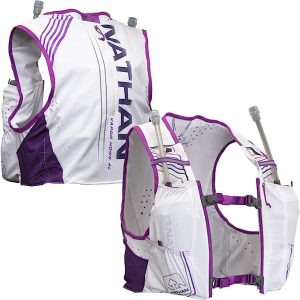
Nathan is a brand that is popular among runners and offers a range of hydration packs and belts. Some popular models include the Nathan VaporAir, the Nathan QuickStart, and the Nathan TrailMix. These packs typically feature a lightweight design, adjustable straps for a comfortable fit, and a range of storage options. Prices for Nathan hydration packs typically range from $50 to $150, depending on the model.
When choosing a hydration pack, it’s important to consider the features that are most important to you, such as capacity, weight, and comfort. It’s also a good idea to read user reviews and ratings to get an idea of how well the pack performs in real-world conditions.
Maintenance and Care
Proper maintenance and care are essential to keeping your hydration pack in good working order and extending its lifespan. Here are some tips for maintaining and caring for your hydration pack:
1. Proper Cleaning and Storage
Regular cleaning is important to keep your hydration pack free from mold, bacteria, and other contaminants. After each use, empty the bladder and wash it thoroughly with warm water and soap. Use a specialized cleaning kit, which typically includes a brush and cleaning tablets, to thoroughly clean the bladder and tube. Rinse the bladder and tube with clean water and allow them to dry completely before storing the pack.
Store your hydration pack in a cool, dry place when not in use. Avoid storing it in direct sunlight, as this can cause damage to the materials and affect the integrity of the bladder.
2. Maintenance Tips
Inspect your hydration pack regularly for signs of wear and tear, such as cracks or leaks in the bladder, worn-out bite valves or tubes, or frayed straps. Replace any damaged parts as soon as possible to prevent further damage and ensure the pack continues to function properly.
Check the bite valve regularly to ensure that it is working properly and not clogged with debris. If the valve is not working properly, disassemble it and clean it thoroughly.
3. When to Replace Parts or the Entire Pack
The lifespan of a hydration pack depends on a number of factors, including the quality of the materials, frequency of use, and how well it is maintained. Over time, parts such as the bladder, bite valve, and tubes may need to be replaced due to wear and tear or damage.
If the bladder or other parts of the pack are damaged beyond repair, it may be time to replace the entire pack. When shopping for a new pack, consider the features that are most important to you, such as capacity, weight, and comfort.
By following these maintenance and care tips, you can keep your hydration pack in good working order and extend its lifespan.
What is the best hydration pack for cycling and running?
Best Hydration Packs for Cycling
When it comes to cycling, having a reliable hydration pack is essential to stay hydrated and perform at your best. Here are some of the top hydration packs for cycling, along with their pros and cons:
1. CamelBak M.U.L.E. Hydration Pack
The CamelBak M.U.L.E. hydration pack is a popular choice among cyclists due to its durability, large capacity (100 oz), and comfortable fit. It also has plenty of storage space for other essentials such as snacks, tools, and extra layers. The M.U.L.E. features CamelBak’s patented Crux reservoir system, which delivers 20% more water per sip than previous models.

Pros
- Large capacity
- Durable
- Comfortable fit
- Plenty of storage space
Cons
- On the heavier side
- May not be suitable for shorter torso lengths
2. Osprey Raptor 14 Hydration Pack
The Osprey Raptor 14 hydration pack is another popular choice among cyclists, particularly for longer rides. It features a 3-liter reservoir and a magnetic bite valve that attaches to the chest strap for easy access. The Raptor 14 also has a ventilated back panel for improved airflow and a helmet attachment point.

Pros
- Large capacity
- Magnetic bite valve
- Ventilated back panel
- Helmet attachment point
Cons
- Expensive
- May be too large for shorter rides
3. Deuter Compact EXP 12 Hydration Pack
The Deuter Compact EXP 12 hydration pack is a versatile option that is suitable for both road and mountain biking. It features a 3-liter reservoir and a ventilated back panel for improved airflow. The Compact EXP 12 also has a helmet attachment point and a rain cover for wet weather conditions.
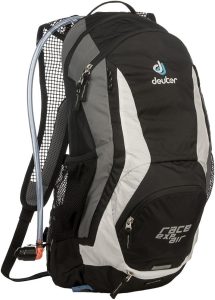
Pros
- Versatile
- Ventilated back panel
- Helmet attachment point
- Rain cover
Cons
- Limited storage space
- May not be suitable for longer rides
4. Evoc CC 10L Hydration Pack
The Evoc CC 10L hydration pack is a lightweight and compact option that is ideal for shorter rides or for those who prefer a minimalist setup. It features a 2-liter reservoir and a ventilated back panel for improved airflow. The CC 10L also has a helmet attachment point and a tool compartment.
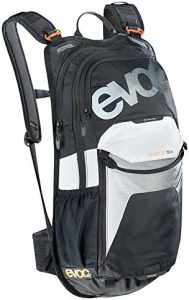
Pros
- Lightweight and compact
- Ventilated back panel
- Helmet attachment point
- Tool compartment
Cons
- Limited storage space
- May not be suitable for longer rides
Overall, the best hydration pack for cycling will depend on your individual needs and preferences. Consider factors such as capacity, comfort, and storage space when choosing a hydration pack for your cycling adventures.
Best Hydration Packs for Running
Staying hydrated during long runs is crucial to maintain peak performance and prevent dehydration. Here are some of the top hydration packs for running, along with their pros and cons:
1. Salomon Advanced Skin 12 Set Hydration Vest
The Salomon Advanced Skin 12 Set hydration vest is a popular choice among runners due to its comfortable fit and lightweight design. It features two soft flasks (500ml each) in the front pockets for easy access, as well as a 1.5L bladder in the back compartment. The vest also has plenty of storage space for other essentials such as gels, keys, and a phone.

Pros
- Comfortable fit
- Lightweight
- Easy access to hydration
- Plenty of storage space
Cons
- Expensive
- May not be suitable for shorter runs
2. Nathan VaporAir 7L Hydration Vest
The Nathan VaporAir 7L hydration vest is another popular choice among runners, particularly for those who prefer a minimalist design. It features a 2L bladder and a breathable back panel for improved airflow. The VaporAir also has several pockets for storing essentials such as gels, keys, and a phone.
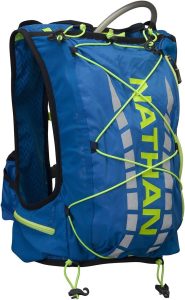
Pros
- Lightweight
- Breathable back panel
- Several pockets for storage
Cons
- Limited capacity
- May not be suitable for longer runs
3. CamelBak Circuit Hydration Vest
The CamelBak Circuit hydration vest is a lightweight and comfortable option that is suitable for shorter runs. It features a 1.5L bladder and a ventilated mesh back panel for improved airflow. The Circuit also has several pockets for storing essentials such as gels and keys.

Pros
- Lightweight and comfortable
- Ventilated mesh back panel
- Several pockets for storage
Cons
- Limited capacity
- May not be suitable for longer runs
4. Osprey Duro 1.5 Hydration Pack
The Osprey Duro 1.5 hydration pack is a versatile option that is suitable for both running and hiking. It features a 1.5L bladder and a breathable back panel for improved airflow. The Duro also has several pockets for storing essentials such as gels, keys, and a phone.

Pros
- Versatile
- Breathable back panel
- Several pockets for storage
Cons
- Limited capacity
- May not be suitable for longer runs
Overall, the best hydration pack for running will depend on your individual needs and preferences. Consider factors such as capacity, comfort, and storage space when choosing a hydration pack for your running adventures.
Best Hydration Packs for Triathlons
Triathlons require athletes to transition between three different sports, making it essential to have a hydration pack that can be worn comfortably and is easy to access. Here are some of the top hydration packs for triathlons:
1. CamelBak Octane Dart Hydration Pack

The CamelBak Octane Dart Hydration Pack is a minimalist option that is perfect for triathlons. It has a 1.5-liter hydration bladder, a small storage compartment, and a lightweight design. The shoulder straps are adjustable and breathable, making it comfortable to wear during a race.
2. Nathan Sports Vapor Air 7L Hydration Pack

The Nathan Sports Vapor Air 7L Hydration Pack is a lightweight and breathable vest that has a 2-liter hydration bladder. It also features pockets for storing nutrition and other small essentials. The vest design makes it easy to access the bladder and the pockets while on the move.
3. Osprey Duro 6 Hydration Pack

The Osprey Duro 6 Hydration Pack has a 1.5-liter hydration bladder and multiple pockets for storing nutrition, a phone, and other small essentials. The pack also has a breathable mesh back panel and adjustable shoulder straps for a comfortable fit. It also features a helmet attachment for easy storage during a race.
4. Salomon ADV Skin 12 Set Hydration Pack
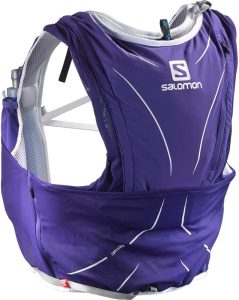
The Salomon ADV Skin 12 Set Hydration Pack is a high-performance vest that is designed for long-distance events. It has a 1.5-liter hydration bladder and multiple pockets for storing nutrition, a phone, and other essentials. The vest design allows for easy access to the bladder and pockets while on the move, and the adjustable straps provide a comfortable fit.
Comparison of Features and Prices
| Hydration Pack | Hydration Capacity | Storage Capacity | Weight |
|---|---|---|---|
| CamelBak Octane Dart | 1.5 liters | 3 liters | 0.33 lbs |
| Nathan Sports Vapor Air 7L | 2 liters | 7 liters | 0.79 lbs |
| Osprey Duro 6 | 1.5 liters | 6 liters | 0.94 lbs |
| Salomon ADV Skin 12 Set | 1.5 liters | 12 liters | 0.94 lbs |
Pros and Cons of Each
- CamelBak Octane Dart:
- Pros: Minimalist design, lightweight, affordable
- Cons: Limited storage capacity
- Nathan Sports Vapor Air 7L:
- Pros: Lightweight, breathable vest design, ample storage capacity
- Cons: Higher price point
- Osprey Duro 6:
- Pros: Multiple pockets for storage, comfortable fit
- Cons: Heavier than other options
- Salomon ADV Skin 12 Set:
- Pros: High-performance vest, ample storage capacity
- Cons: Higher price point, may be too bulky for some athletes
When choosing a hydration pack for a triathlon, it’s important to consider factors such as comfort, weight, storage capacity, and price. Ultimately, the best pack for you will depend on your personal preferences and needs during a race.
How to Choose the Right Hydration Pack for Your Needs
When choosing a best hydration pack for cycling and running, there are several factors to consider to ensure you get the right one for your needs:
- Activity: Consider the activity you will be doing. Is it cycling, running, hiking, or something else? Different activities may require different types of hydration packs.
- Capacity: Determine how much water you will need for your activity. If you’re going on a shorter run, a smaller pack may suffice. For longer activities, you may need a larger pack with a higher capacity.
- Fit: A good fit is crucial for comfort and performance. Make sure the pack fits snugly and does not move around while you’re on the move.
- Comfort: Look for a pack with comfortable straps and padding, especially in areas where the pack rests on your body.
- Weight: Consider the weight of the pack, especially if you’re doing an activity where every ounce counts.
- Durability: Choose a pack made from durable materials that can withstand the rigors of your activity.
- Features: Look for additional features that may be important to you, such as pockets, clips, or attachment points for gear.
Determining the Right Size and Capacity
To determine the right size and capacity for your hydration pack, consider the length of your activity, the climate, and how much water you typically consume. As a general rule of thumb, a 1.5-2 liter pack is usually sufficient for most activities lasting 1-3 hours. For longer activities, consider a pack with a capacity of 2.5-3 liters or more.
Trying on and Testing Hydration Packs
Before purchasing a hydration pack, it’s essential to try it on and test it out. Make sure to wear it with the clothes you would typically wear during your activity and adjust the straps and fit as needed. Take a few steps and move around to ensure the pack stays in place and is comfortable. It’s also a good idea to fill the pack with water and test the flow of the bite valve to ensure it works properly.
By considering these factors and testing out various hydration packs, you can find the right one to meet your needs and help you stay hydrated during your activity.
Conclusion – best hydration pack for cycling and running
Hydration packs are essential for cyclists and runners to stay hydrated during long rides or runs. When choosing the right hydration pack, it’s important to consider the type, materials, capacity, weight, comfort, durability, access to water, ease of cleaning, additional features, filters and purifiers, and maintenance and care.
Backpacks, waist packs, and vest packs are the three main types of hydration packs, each with its own pros and cons. Materials used in hydration packs can include nylon, polyester, and mesh, each with its own advantages and disadvantages. Water bladders and reservoirs are available in various types and capacities, and bite valves also come in different forms.
Filters and purifiers can be a valuable addition to a hydration pack, especially for those who engage in outdoor activities where the water source may be questionable. Popular brands and models of hydration packs include CamelBak, Osprey, and Nathan. When choosing a hydration pack, it’s important to take into account personal needs and preferences, such as size and capacity, comfort, and additional features.
To find the right hydration pack for your needs, consider factors such as the type of activity you’ll be doing, the length of the activity, the weather conditions, and personal preferences. Try on different options and test them out before making a purchase.
In conclusion, the best hydration pack for cycling and running will depend on personal needs and preferences. It’s important to choose a pack that is comfortable, durable, and meets your specific hydration needs. With the right hydration pack, you can stay properly hydrated and perform at your best during your outdoor activities.
FAQs – best hydration pack for cycling and running
Can I use a hydration pack for other outdoor activities besides cycling and running?
How do I clean my hydration pack properly?
Can I use a hydration pack without a water bladder?
How often should I replace my hydration pack?
Do I need to buy a separate hydration pack for triathlons?
How do I prevent leaks in my hydration pack?
Can I use a hydration pack for long-distance races?
What capacity should I choose for my hydration pack?
Can I adjust the fit of my hydration pack?
Can I store other items besides water in my hydration pack?
It’s important to stay hydrated during physical activity, and choosing the right hydration pack can make a big difference in comfort and convenience. By considering key features and factors, and researching brands and models, you can find the best hydration pack for your needs. Don’t forget to properly maintain and care for your hydration pack to ensure it lasts a long time.

